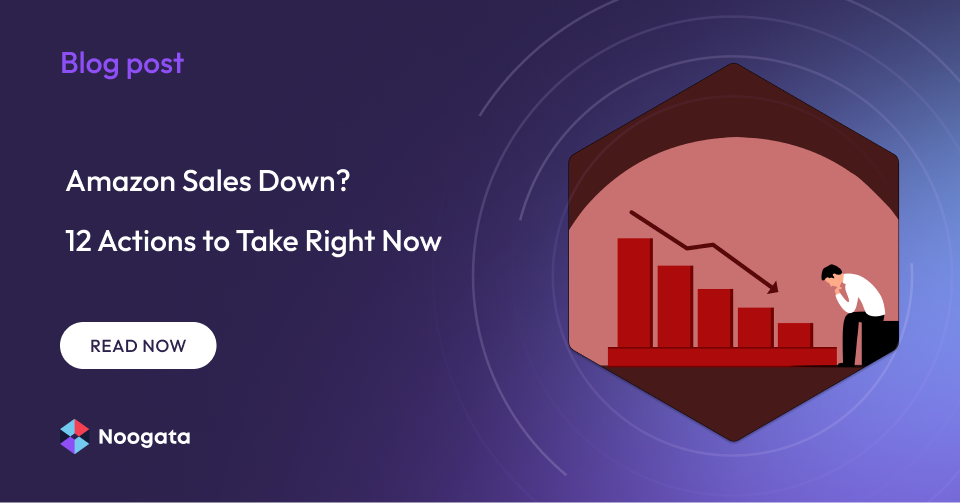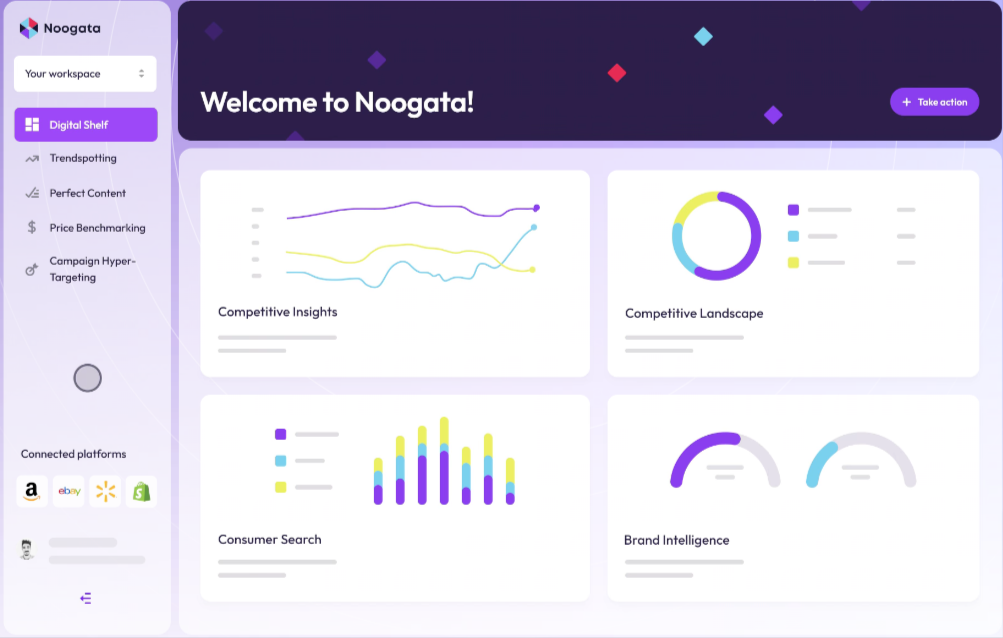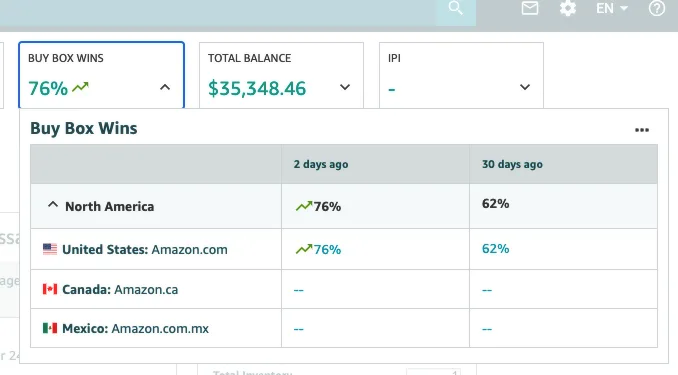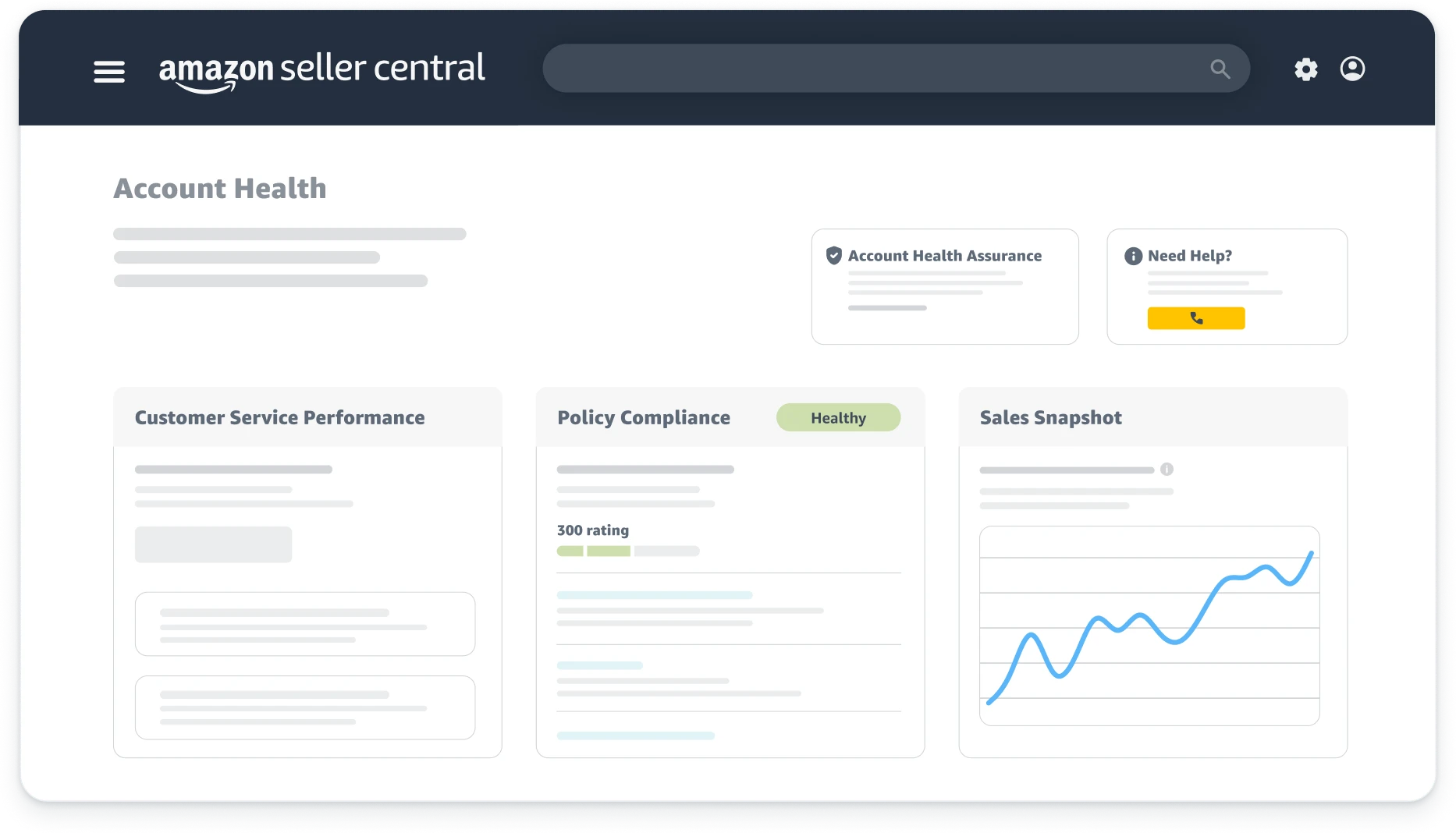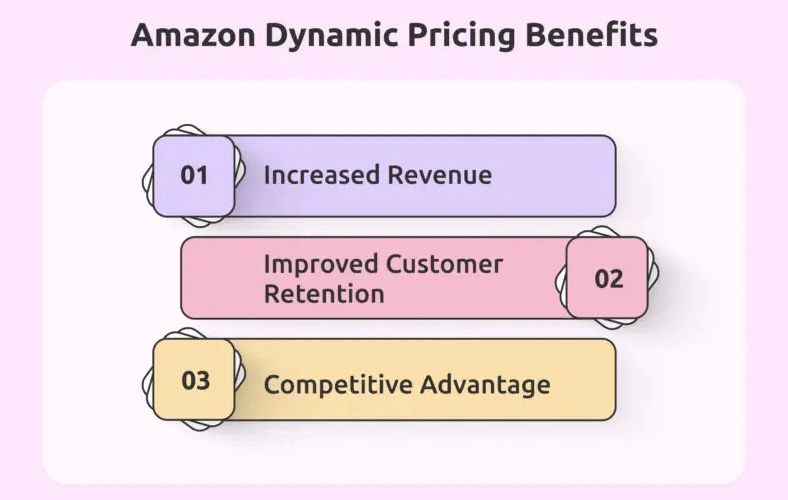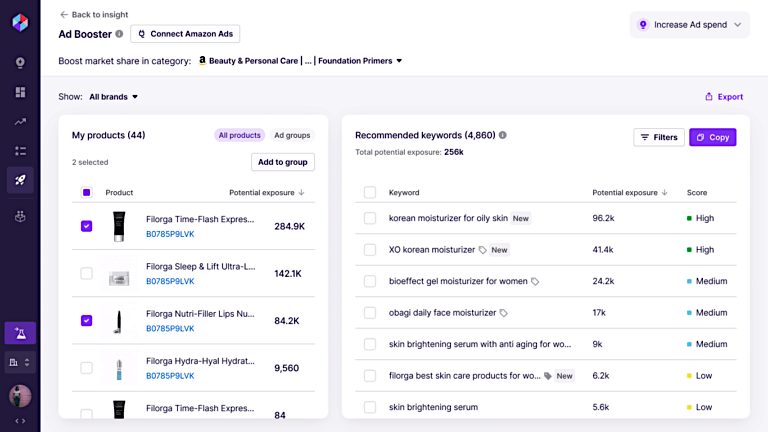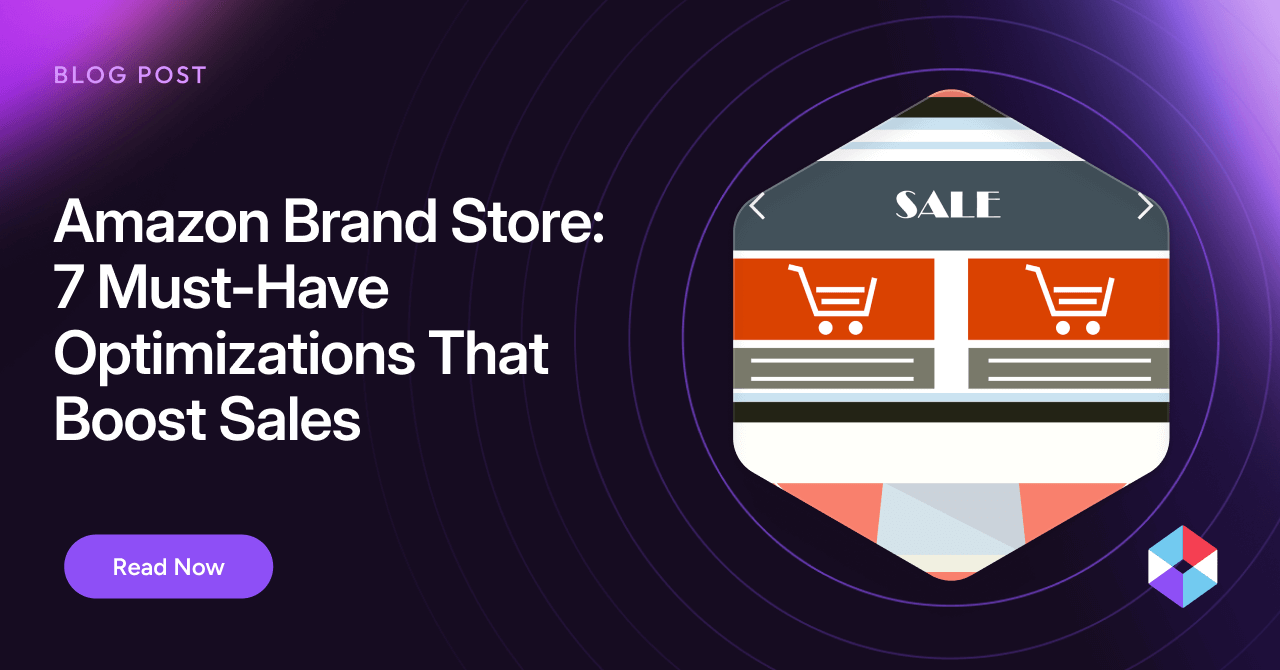Ecommerce on the Amazon marketplace is a rollercoaster, and there’s nothing worse for a third-party seller than seeing their Amazon sales down for a prolonged period. With so many factors at play, knowing what went wrong is challenging. Is the dip due to increased competition, optimization mistakes, changes to Amazon’s search algorithm—or something else entirely?
If you’re an Amazon seller experiencing a dip, don’t panic. Amazon sellers make a whopping $4.1 billion globally, so there’s still plenty of revenue to be made with the right strategies. A sudden Amazon sales down trend is a common challenge, but it’s one you can overcome. You can figure out what’s happened and—most importantly—what to do next.
Here’s how to do it.
How to Monitor Your Amazon Sales
You can never take your eye off the ball when selling on Amazon. Here are the primary ways to monitor your sales performance:
Amazon Seller Central Analytics
The Seller Central homepage is a hub for tracking your sales. You can review all previous sales data for individual ASINs over any period.
Simply click Reports > Business Reports > Sales Dashboard.
For more details on your sales stats, click Business Reports > Detail Page Sales and Traffic.
Third-party Analytics Solutions
Some third-party solutions offer more comprehensive eCommerce performance monitoring than Amazon’s built-in platforms. For example, Noogata’s solution uses advanced AI analytics and predictive modeling to show you why your Amazon sales are down and what you can do about it to unlock new growth opportunities.
The solution tracks metrics and insights like:
- Conversion rate optimization (CRO)
- Competitor data
- Customer sentiment
- Price fluctuations
It also offers actionable insights that enable you to leverage the data to optimize your sales and advertising strategies.
Amazon Sales Down: What Happened?
There are a million reasons why you may be experiencing an Amazon sales down trend. The easiest way to diagnose problems is via Seller Central or a third-party analytics solution dashboard.
The most common problems are:
- No differentiation: There are 9.7 million sellers on Amazon. You won’t maximize sales if your products don’t stand out from competitors in your product niche.
- Lack of visibility: Are you putting in the work to get your products in front of the right customers, such as through SEO optimizations and ad investment?
- Increased competition: Always stay one step ahead of the market, especially when more sellers enter your niche.
Amazon Sales Down? 12 Actions to Take Right Now
Are you struggling with an Amazon sales slump? It’s a frustrating scenario, but there are actionable steps you can take to turn things around. Try these twelve strategies:
1. Check if You’ve Lost the Buy Box
Your sales might slip if you lose the Buy Box. This often happens when Amazon deems your products less appealing to customers in four key categories:
- Price
- Availability
- Shipping options
- Customer service
Check if you’ve lost the Buy Box by logging into your Seller Central account, then go to Sales Summary > View more of your sales statistics.
Alternatively, go to Reports > Business Reports > Detail page sales and traffic > ‘Featured offer’ metric. If the metric is less than 85%, another seller is likely stealing the Buy Box.
If you’ve lost the Buy Box, carefully review the four categories and immediately begin improving those areas.
2. Fix Your Account Health
Poor account health can be another reason why you might lose the Buy Box, and it can lead to more severe consequences like suspension.
You can find your account health in Seller Central > Performance > Account Health.
Make sure you have performance notifications enabled so you can act on issues quickly. Account health red flags include:
- Delivery issues
- Policy violations
- Negative customer experience
- Bad reviews
Immediately remedy any issues you discover in your health check.
3. Adapt Unseasonal Products
It’s impossible to appeal to all buyers at all times of the year. Seasonal shifts could be causing your sales dips. Take a good look at your calendar and your catalog while considering the following:
- Remember that Amazon’s most profitable months naturally happen during the fourth quarter of the year, encompassing Black Friday, Cyber Monday, Halloween, and Christmas.
- Identify when your products will likely get the best sales. For example, beach toys and umbrellas will sell better in summer.
- For purely seasonal products, ensure you’re doing everything possible to be a top-ranked seller during your targeted times of year.
- To offset unseasonal products, consider adding more items to your portfolio that will sell year-round.
4. Mitigate Negative Feedback
A bad customer review can sink your ship faster than you can say, ‘Amazon sales are down!’ Customers won’t trust poor reviews, and Amazon will penalize your account by ranking your competitors higher and giving them the Buy Box.
In Seller Central, go to Performance > Feedback to see the percentage of negative feedback in the last 30 to 90 days. Then, you can contact Amazon regarding any mistaken or incorrect feedback, contact buyers to mitigate negative reviews, and take their thoughts on board for the future.
5. Tweak Your Pricing Strategy
Pricing is a difficult balance between remaining competitive and generating maximum profit. Ideally, you want customers to purchase quickly rather than wait around (e.g., abandoning their cart) because they anticipate a better offer.
Opt for a dynamic pricing strategy that automatically analyzes market and competitor fluctuations and shifts prices accordingly. This approach uses predictive price modeling and recommendations to help you maintain price integrity and drive sales.
You can also use an AI-driven eCommerce competitive intelligence platform to automate real-time price changes and stay ready to react.
6. Optimize Keywords and Content
Continuous keyword and content optimization is essential when your Amazon sales are down. Staying on top of it can be challenging, but a competitive intelligence platform like Noogata can help you:
- Identify trending keywords.
- Compare your product content against competitors.
- Add or remove keywords in real time.
- Optimize content pages (like titles and descriptions) quickly and at scale.
7. Optimize Listing SEO
Do you know your share of paid versus organic search traffic? If not, you’re missing opportunities to boost your Amazon sales. The easiest way to improve your SEO is to identify new and emerging search trends and increase the search discoverability of all products on your digital shelf.
Then, you can identify the search terms that drive traffic to your specific categories to understand how customers search and discover your products. Implement the keywords you find into your listing’s title and content.
8. Overcome Macroeconomic Factors
Recent inflation hikes mean there is less retail buying worldwide. When buyer sentiment changes, conduct market research to find out why and identify how you can adapt your product offerings to suit customers’ needs.
In trying times, it’s even more critical to ensure your pricing is competitive and your content accurately reflects the value of your product. When shoppers tighten their purse strings, they need a solid reason to purchase—so give them one.
9. Re-evaluate Market Demand
You need to know your buyers better than anyone. Market research isn’t just reserved for new product launches—you can use AI tools to constantly analyze market demands and deliver data directly to you. These tools discover growth opportunities despite fluctuations in market demand so you can tailor your Amazon sales strategies in real-time.
10. Adjust PPC Campaigns
The three main formats of Amazon PPC ads are Sponsored Products, Sponsored Brands, and Sponsored Display ads. Amazon advertising has become critical to increasing your products’ visibility in the highly competitive marketplace.
Go to Seller Central > Advertising > Campaign Manager to create a campaign.
Of course, you’ll want to feel confident that your ad budget is well spent. Rather than playing a guessing game, you can use Noogata to automatically identify the best products to advertise, eliminate poor-performing keywords, and get more value and sales across your digital shelf.
11. Kickstart Sales and Promotions
Your Amazon sales down trend may be due to a sale or promotion ending. If a deadline has slipped through the cracks, you can kickstart new promos using the following strategies:
- Bundles: Selling two or more products together at an alternative price.
- Off-Amazon promos: Trial coupon codes on other platforms, like Instagram or your website, to drive traffic to Amazon.
- Off-Amazon ads: Set up ad campaigns on other sites like Facebook that run alongside your Amazon PPC campaigns.
Use the tips below to market sales and promotions across Amazon via PPC campaigns and off-site.
12. Drive More Traffic to Listings
Amazon selling doesn’t just happen on Amazon. Market your products off-site, including your website and social media channels, and direct the traffic to your Amazon pages. Winning Strategies include:
- Newsletters: Encourage email sign-ups on your website so you can send regular updates to interested customers.
- SEO campaigns: Make sure your website ranks highly on search engines by prioritizing SEO campaigns.
- User-generated content: Encourage customers to post social media content using and promoting your product. You can also engage influencers to help.
- Competitions: Competitions and special promotions for your social media followers are great strategies to encourage customers to use your products. After all, everyone loves a freebie!
Amazon Sales Down? Not for Long with Noogata
When your Amazon sales down trend seems inexplicable, it’s time for a thorough analysis of your listings and strategies. Boosting Amazon sales when they decline requires fast reactions and long-term commitment. Thankfully, AI technology can help you with both.
Noogata helps you constantly identify growth opportunities and make real-time modifications to pricing, content, ads, and more, enabling you to achieve soaring sales on Amazon. With the help of advanced competitive intelligence and AI insights, you can adjust quickly, correctly, and at scale to avoid Amazon sales down. Book a free demo today.
